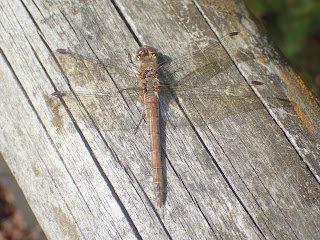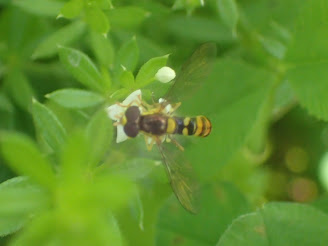Late August 2020
When I was growing up like many nature-lovers I was a fan of David Attenborough programmes, for their content, cinematography and his presenting style, but I was very aware that most of the species featured lived in exotic places and I was unlikely to ever see them. Accordingly I tended to seek out programmes that described UK wildlife, and the one I remember most was actually a programme about the attempted reintroduction of Large Coppers to the Fens. It was in 2014 that the cover of a Norfolk & Norwich Naturalists Society publication about parasitic organisms (called Hidden Lives) reminded me of the episode of Trials of Life, in which a Trematode worm takes over an Amber Snail, making it climb onto vegetation and flash it's antennae. The hope is that a bird will eat it and the Trematode can continue its life cycle inside the bird. The clip, entitled "Zombie Snail" is available to watch here: https://www.bbc.co.uk/programmes/p00bxh35. Why is all of this relevant? Well, it was at this point that I realised that one of these really interesting species "as featured on TV" occurred about 6 miles from Norwich, at the Ted Ellis Nature Reserve at Wheatfen.
The thing is, finding a few infected snails on a large nature reserve is very difficult. I had kept an eye out on each of my visits to no avail. Then, a few weeks ago I saw a post on the Wheatfen Facebook page that a volunteer had found and photographed a snail infected by Leucochloridium paradoxum (in fact she had done better than that, finding another snail infected by another species in the genus with brown bands instead of green). On the off chance I contacted Will Fitch, the Wheatfen warden, to ask if he knew where they had been seen. I received the answer that they were at the far end of Smee Loke (which sounds like a location from a Tolkien novel but is one of the main Wheatfen paths). With the location narrowed down, it was time for an Emerson family wildlife walk to try to track it down.
After a while it wasn't looking too promising, between us Cathy & I had found a few Amber Snails, but all apparently healthy. It was on our way back when I happened to glance into a patch of bindweed and noticed a snail with a pulsing, banded green antenna! Get in!
Wheatfen is an excellent site for invertebrates and we saw various other things, including Spiked Shieldbug and Adelphocoris ticinensis, whilst Cathy found the impressive larva of Cimbex connatus, a large sawfly that feeds on Alders.
















































